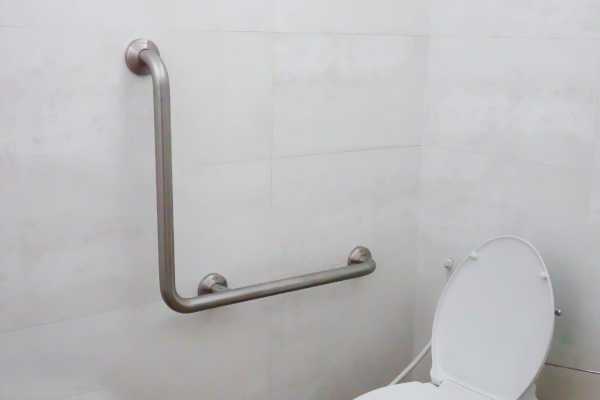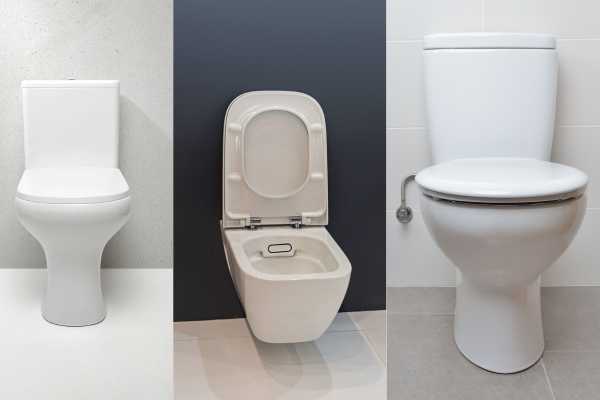Toilet seat risers with handles are innovative bathroom accessories designed to enhance both safety and convenience for individuals with mobility challenges or anyone seeking extra support while using the toilet. These specialized devices provide a simple yet effective solution For raising the height of the toilet seat, making It easier to sit down and stand up, which can be particularly beneficial for seniors, those recovering from surgery, or people with physical limitations. The integrated handles offer additional stability and support, allowing users to maintain their balance and regain independence in their daily routines. In this article, We will explore the features, benefits, and considerations associated with Raised restroom seat with handles, highlighting their role in improving the overall well-being and quality of life For those in need.
Understanding Toilet Seat Risers With Handles

Raised restroom seat with handles are essential bathroom aids that cater to the needs of individuals with various physical limitations. These innovative devices are designed to be placed on top of existing lavatory seats to raise their height, offering a more accessible and comfortable seating position. What sets these risers apart is the inclusion of sturdy handles, providing users with added support and stability. As we delve into the world of raised lavatory seat with handles, It becomes clear that they serve a crucial role in enhancing the bathroom experience For those who require extra assistance, ultimately promoting independence and safety.
The Importance Of Seat Risers

The importance of Raised restroom seat, particularly those equipped with handles, cannot be overstated. For seniors, people with disabilities, or those recovering from surgery, using The bathroom can be a challenging task. Raised lavatory seats address this issue by increasing the height of the toilet seat, reducing The strain and effort required To sit down and stand up. By providing a more ergonomic position, they contribute To the overall well-being of users, reducing the risk of falls or injuries that can occur when attempting to use A standard toilet. Furthermore, these devices promote self-confidence and independence, allowing individuals To maintain their dignity and autonomy.
Benefits Of Toilet Seat With Handles

Toilet seat risers with handles offer a myriad of benefits that make them indispensable In the realm of bathroom safety and accessibility. Firstly, they are easy To install, requiring no specialized tools or expertise. This convenience ensures that anyone can quickly adapt their existing toilet for improved accessibility. The integrated handles, A hallmark feature of these risers, provide users with secure handholds, preventing slips and falls. Additionally, The increased seat height minimizes The need for excessive bending or straining, reducing the risk of muscle strain and discomfort. The ergonomic design of these risers transforms the bathroom into A more user-friendly space, promoting comfort and convenience For individuals of all ages and physical conditions. Ultimately, raised lavatory seat with handles contribute to a higher quality of life by empowering individuals to maintain their independence while ensuring their safety and well-being.
Types Of Toilet Seat Risers
1. Hinged Toilet Seat Risers

Hinged raised lavatory seat represent a versatile and adaptive solution for individuals seeking enhanced bathroom accessibility. These innovative devices are designed with a hinged mechanism that allows the riser to be lifted, providing easier access to the underlying toilet seat. Hinged risers are particularly advantageous for households where multiple users with varying needs share the same bathroom. They can be easily raised when required and lowered to their standard position when not in use, catering to the diverse needs of the users. The hinged design not only simplifies cleaning and maintenance but also ensures that these risers seamlessly integrate into the existing toilet without the need for any complex installations.
2. Non-Hinged Toilet Seat Risers

Non-hinged raised lavatory seat, on the other hand, are A straightforward and reliable solution For those In need of elevated toilet seats without the added complexity of moving parts. These risers come As one solid piece and are installed directly onto the existing lavatory seat. While they lack The hinge feature, they offer A stable and fixed height increase, making them A robust choice for users who require consistent elevation and stability. Non-hinged risers are renowned For their durability and straightforward installation process, and they are especially well-suited for individuals who prefer A more permanent and secure solution To their bathroom accessibility needs.
How To Choose The Right Toilet Seat Riser

- Height Adjustment: Determine the desired height increase, as Raised restroom seat come In various heights. Choose one that aligns with your comfort and accessibility requirements.
- Hinged vs. Non-Hinged: Decide whether you prefer a hinged or non-hinged riser. Hinged risers offer versatility, while non-hinged ones provide stability.
- Weight Capacity: Be mindful of weight capacity limits, especially if the user is on the heavier side. Ensure the riser Can safely support the intended user’s weight.
- Handles: Evaluate the design and sturdiness of the handles. Handles are crucial for support and balance, So choose a riser with robust and comfortable handles.
- Compatibility: Confirm that the riser is compatible with your existing toilet. Check for measurements and specifications to ensure a proper fit.
- Installation: Consider your DIY skills and preferences. Some risers require professional installation, while others can be easily installed without special tools.
- Ease of Cleaning: Look For risers with a design that facilitates cleaning, as maintaining hygiene is essential.
- Price and Quality: Balance your budget with the quality of the riser. Investing in a reliable product may be worthwhile for long-term use.
Installation And Maintenance
Installing a toilet seat riser can vary depending on the model and your DIY skills. Generally, the process involves removing the existing seat, placing the riser in position, and securing it. For hinged risers, ensure the hinge mechanism is functioning correctly. Maintenance primarily involves regular cleaning and inspection of handles, hinges, and any moving parts to ensure they are in good condition. If any issues arise, follow the manufacturer’s guidelines for maintenance and seek professional help when necessary.
Top Brands Of Toilet Seat Risers With Handles

- Drive Medical: Known for their wide range of medical equipment, Drive Medical produces durable and reliable raised lavatory seat with handles.
- Carex: Carex Is a well-respected brand that specializes In home healthcare products, including raised lavatory seats designed For user comfort and safety.
- NOVA Medical Products: NOVA offers a variety of assistive devices, including raised lavatory seats with sturdy handles For enhanced support and stability.
- Essential Medical Supply: This brand focuses on creating products that improve The daily lives of individuals with mobility challenges, and their raised lavatory seat are no exception.
- HealthSmart: HealthSmart manufactures A range of healthcare products, including raised lavatory seats designed to enhance bathroom accessibility And independence.
User Reviews And Recommendations
Before purchasing a toilet seat riser with handles, it’s often helpful to consult user reviews and seek recommendations from those who have firsthand experience with the product. Many online marketplaces and retail websites provide user reviews, offering valuable insights into the quality, ease of use, and durability of specific raised lavatory seat. Reading these reviews can assist in making an informed decision and choosing a riser that aligns with your needs. Additionally, asking for recommendations from healthcare professionals, friends, or family members who have used raised lavatory seats can provide valuable guidance when selecting the right product for you or a loved one.
Common Questions About Toilet Seat Risers
1. How Do I Install A Toilet Seat Riser?

- First, remove the existing toilet seat by unscrewing the bolts holding it In place. Keep these bolts, As they may be needed for your riser.
- Place the Elevated privy seat on the bowl with the open end facing the tank. Align it with the holes on The toilet bowl.
- Insert the original bolts or The ones provided with the riser through the holes in the toilet bowl and through the riser.
- Tighten the nuts on the underside of the riser to secure It in place. Ensure the riser is stable and doesn’t wobble.
- Depending on the model, You may also need To attach the handles, if not already integrated.
- Finally, double-check that everything Is securely fastened and that the riser is level.
2. Are Toilet Seat Risers Compatible With All Toilets?

Raised lavatory seats are generally designed to be compatible with most standard and elongated toilets. However, it’s essential to note that there can be variations in toilet designs, so not all risers may fit every toilet. Compatibility can depend on factors such as the shape and size of the toilet bowl, as well as the specific model of the toilet seat riser. Some risers are adjustable or come with various attachment options to accommodate different toilet shapes. Before purchasing a lavatory seat riser, it’s advisable to check the product’s specifications and, if possible, measure your toilet to ensure a proper fit. If you have an unconventional or uniquely shaped toilet, you may want to consult with the manufacturer or a healthcare professional for guidance on compatibility.
3. Can I Remove The Riser If Needed?
Yes, Raised lavatory seats are typically removable. They are designed To be installed securely but Can be taken off when needed. To remove a lavatory seat riser, You can follow a process similar To the installation steps In reverse order:
- Unscrew and remove The nuts securingThe riser to the toilet bowl.
- Lift the riser and handle (if applicable) off the toilet.
- Place the original lavatory seat back in its position, using the same bolts.
Keep in mind that You should store the riser In a safe place if You intend to reattach it later. Removing the riser allows for flexibility In adjusting the toilet For various users or when no longer needed.
4. Are There Any Weight Restrictions For Using A Toilet Seat Riser?
Raised lavatory seats typically have weight restrictions specified by the manufacturer. It’s crucial to adhere to these weight limits to ensure the safety and stability of the riser. Weight restrictions can vary from one model to another, so it’s essential to check the product’s documentation or labels for the manufacturer’s specified maximum weight capacity. Exceeding the weight limit may compromise the integrity of the riser, potentially leading to breakage or instability. If you require a lavatory seat riser that can accommodate a higher weight capacity, be sure to choose a model that aligns with your specific needs and consult with healthcare professionals if necessary for personalized recommendations.
5. Do I Need Professional Help For Installation?
- DIY Skills: If you are experienced with basic home improvement tasks, have the necessary tools, and can follow instructions accurately. You may be able to install a lavatory seat riser on your own. Many risers are designed for user-friendly installation.
- Riser Model: Some risers are more straightforward to install than others. Non-hinged risers, for example, are often easier to set up compared to hinged models, which may require more precise alignment of moving parts. Consult the product’s installation instructions to assess the complexity.
- Assistance: If you have physical limitations or find DIY tasks challenging, it may be advisable to seek professional help. A handyman or a qualified caregiver can ensure that the riser is securely and correctly installed.
- Special Requirements: If you have a unique or unconventional toilet, or if you’re unsure about compatibility, professional assistance may be beneficial in determining the right installation approach.
Conclusion
Toilet seat risers with handles are valuable tools for improving bathroom accessibility and promoting user independence. When selecting a riser, consider factors such as height, hinge design, weight capacity, and compatibility with your toilet. User reviews and recommendations can offer valuable insights into the performance of specific models. Installation is typically a manageable DIY task, but professional help is advisable for those with limited DIY experience or unique installation requirements. Ultimately, the right lavatory seat riser can significantly enhance the comfort and safety of individuals with mobility challenges, contributing to a higher quality of life and increased independence in daily activities.


